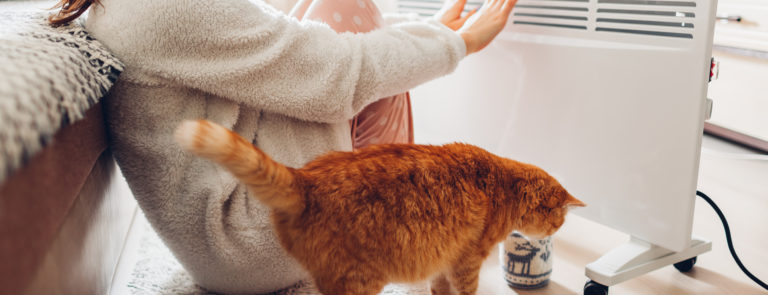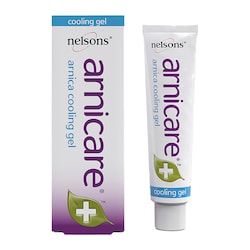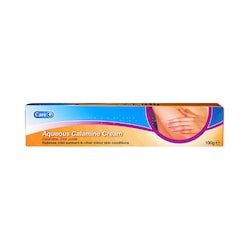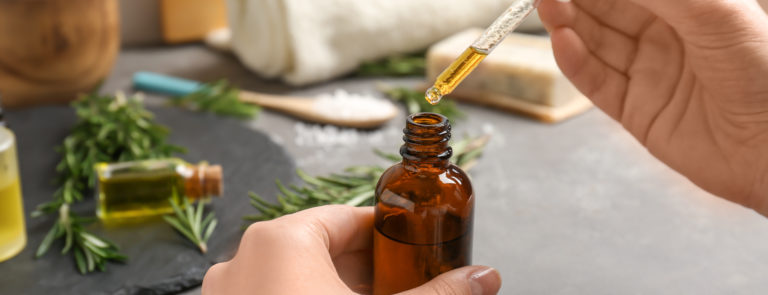20% off £30
What causes cold hands and feet - What you can do about it?

The human body is in constant flux to help us stay at a safe temperature and keep our vital organs warm.
When it’s chilly outside, your body’s main priority becomes distributing blood to your core organs to keep them at their required temperature.
This may change the amount of blood that flows to your hands and feel and make them feel cold.
But don’t worry, this is completely normal. When it’s cold our intelligent bodies make the blood vessels in our feet and hands constrict (aka. spasm) to prevent heat escaping from our core.
Having naturally colder hands and feet is quite common, and it doesn’t necessarily mean that an underlying disease is causing it.1
Just make sure to load up on fluffy socks, tights and gloves to keep cold feet and hands warm when it’s a bit chilly out.
However, if your hands and feet are always cold and bothering you and you seem to be having other related symptoms (like your fingers changing colour), then there are more things you can do about it.
Read about some conditions that may cause cold feet and hands and what you can do for each one.
Why are my hands and feet always cold?
As our blood plays a major role in keeping our bodies warm, a lot of cold hands and feet causes boil down to bad circulation.
Here are some of the most common conditions that can affect the blood flow around our bodies and may also be responsible for our cold hands and feet.
7 potential cold hands and feet causes
-
Anaemia
Anemia is a blood disorder, and there are several different types of it.2
Every anemia disorder is categorised by a lack of red blood cells which contain haemoglobin – a protein that helps transport oxygen throughout the body.
One of the most common symptoms of anemia is cold hands and feet, as not having enough red blood cells may cause the body to struggle to transport blood to them.3
What you can do about it
If you think you may have anemia, the best thing to do it ask your GP for a blood test, especially if you have some of the other symptoms of the condition, like:4
- Tiredness and fatigue
- Weakness
- Brittle nails
- Pale skin
One of the most common types of anemia is iron deficiency anemia, so in the meantime you could up your iron-rich food intake with leafy greens, beans, nuts, fortified breakfast cereals and red meat – making sure to consume adequate vitamin C to help the iron get absorbed.
Handpicked content: Which foods are high in iron?
-
Raynaud’s syndrome
Raynaud’s syndrome, sometimes known as Raynaud's hands, is a common condition that affects the blood circulation in your body and can come with the following symptoms:5
- Fingers and toes change colour when you’re stressed, cold or anxious
- Pain
- Pins and needles
- Numbness
- Difficulty moving the affected area
What you can do about it
Raynaud’s syndrome and what causes it is not fully understood at present.
However, if you have cold hands and feet along with one or more of the following symptoms it could be worth speaking to your GP about it and trying to determine if Raynaud’s syndrome has anything to do with it.
-
Diabetes
Diabetes and the complications that usually come with it can sometimes cause cold hands and feet, here’s why:6
- Heart disease: having diabetes increases your risk of developing heart disease or narrowed arteries, both of which may contribute to cold feet and hands
- Blood circulation difficulties: one of the most common symptoms of diabetes is poor blood circulation, especially when it comes to your hands and feet
- Nerve damage: when you have diabetes, it increases your chance of developing nerve damage, especially when it comes to your feet. The nerve damage is caused by sustained high blood sugar levels over a period of time. One of the earliest signs of this type of damage is a feeling of ‘pins and needles’ in your hands or feet
What you can do about it
If you have diabetes and are worried about any of these complications, please contact your GP who will be able to investigate matters and give you tailored advice.
-
Arterial disease
Arteries carry oxygen-rich blood away from the heart and transport it to the rest of the body; each artery is a muscular tube made up of three layers.
There are a few types of arterial diseases that narrow the arteries or cause them to become dysfunctional, which reduces the blood flow to your feet and legs.
One of the most common arterial diseases that could also cause you to have cold feet is PAD - Peripheral Artery Disease.
PAD is a circulatory condition caused by plaque and fatty deposits building up in the heart or artery walls.
When these substances build up in the arteries, they can cause cold hands and feet due to insufficient blood flow.7
Other symptoms of PAD include:
- Leg cramps when walking
- Cold legs, especially if the legs are different temperatures
- Wounds on the toes or feet that heal slowly
What you can do about it
Seek professional advice from your GP if you have any of these symptoms along with cold hands and feet.
-
Damage from smoking
When you smoke tobacco, it causes damage to blood vessels throughout the body. These damaged vessels become narrower and constrict blood flow, which can sometimes result in cold hands and feet.
The longer your smoke, the higher the chance of damage to the blood vessels in your heart.
This makes it harder for your heart to pump blood through your whole body, which can especially affect your feet and legs.
What you can do about it
If you ever needed another reason to quit smoking, constantly having cold feet and hands could be a good one!
-
Vitamin B12 deficiency
When your body doesn’t get enough vitamin B12 from your diet then it can quickly become deficient.
Vitamin B12 deficiency can cause a condition called pernicious anaemia, which can lead to nerve damage and your body having difficulty moving oxygen around your body.
As discussed earlier in the anaemia section, when the body is struggling to produce enough red blood cells to transport blood around the body efficiently.
This lack of red blood cells can cause poor blood circulation, especially in hands and feet, which can then become cold.8
Other symptoms of vitamin B12 deficiency include:9
- Tingling and numbness in the hands and feet
- Muscle weakness
- Loss of reflexes
- Trouble walking
- Loss of balance
- Weakened bones
- Confusion, depression and memory loss
- Nausea and vomiting
- Heartburn
- Loss of appetite and weight loss
- A smooth, thick, red tongue
What you can do about it
If you have cold hands and feet as well as some of the other symptoms for vitamin B12 deficiency, a simple blood test can be carried out to find out if you are.
Handpicked content: How to test your B12 levels
It’s quite easy to fix and your GP may give you dietary advice, recommend an oral supplement or suggest that you get some vitamin B12 injections if you are severely deficient.
-
You are simply in cold environments quite a lot
Some of us get cold and hands and feet simply because we work, live or hang around in very cold places!
A few examples of people most likely to be in cold environments for long periods of time include:
- People who spend prolonged periods in freezers, like meat packers
- People in the army
- Mountaineers
- Rescue workers
- Hunters
- Groundskeepers
- Sailors
- Fishermen
If the correct protective clothing isn’t worn then it will put them at risk of permanent and very painful damage to the hands and feet, e.g. frostbite.
Some documents from the US Armed Forces show that studies indicate that women have a higher risk of cold injury compared to men.
This may be because of the different body composition of men and women, as those with a higher body fat percentage and higher muscle mass have been shown to maintain their core temperature better than those with less fat and muscle.10
What you can do about it
Wear the right protective clothing, footwear and accessories so that your hands and feet do not stay cold or wet for prolonged periods of time.
If your problems persist, especially even when you’re not working in these conditions, then please contact your GP to investigate other causes.
How to improve circulation in hands and feet
Whatever is causing your cold feet or hands, here are some top tips on how to improve your blood circulation and help keep those hands and feet feeling nice and toasty:
- Slippers and socks: if you often get cold hands and feet indoors, try wearing slippers and socks.
- Choose warmer clothes: give some serious consideration to your winter wardrobe and stock up on high-quality hats, socks, gloves / mittens and a nice warm coat.
- Daily exercise: keeping a good daily exercise routine going can help improve your blood circulation
- Hold something warm: pop the kettle on and make yourself nice warm drinks to hold (and drink!)
- Heating pads: investing in some heating pads for your feet and lower back can help solve the symptom and the cause, as they heat you up and help your blood vessels dilate, which allows for better blood flow to your hands, feet and whole body
- Massage the cold away: it’s surprising how quickly massaging your hands and feet can get you nicely warmed up
- Moist heat packs: you can buy heat packs filled with rice, beans, or other grains that cause moisture when microwaved and moist heat penetrates better11
- Stay away from the freezer: this may seem like an obvious one, but try to avoid delving your hands into supermarket freezers or keeping them in your one at home for too long searching for freezer goodies! Try wearing gloves if you know you’re going to have to reach into freezers.
What does cold hands and feet indicate?
Hands and feet always cold? This is usually a sign of bad circulation in hands and feet and the conditions that cause them, as we have discussed above.
However, cold hands causes can also span from viral and bacterial infections and anxiety to chronic indigestion and low blood pressure, all of which you should definitely consult your GP about.
Is cold hands and feet a sign of heart problems?
Yes, as discussed above, cold hands and feet can be a symptom of the following conditions related to the heart:
- Peripheral Artery Disease (PAD)12
- Other arterial diseases
Can low blood pressure cause cold hands and feet?
Hold on, isn’t high blood pressure the thing we should be worried about? Yes, it is true that high blood pressure can be dangerous, but so can low blood pressure.
When our blood pressure dips to abnormally low levels, aka hypotension, it can cause dizziness and fainting, as well as be potentially life-threatening for some.
Also, when your blood pressure is low, your body will often move blood away from your extremities (your hands and feet) and send it to protect our vital organs. This can leave our hands and feet feeling cold.
If you experience any of the following symptoms along with cold hands and feet, please seek help from your GP:
- Dizziness
- Fatigue
- Blurry vision
- Nausea,
- Confusion
- Weakness
Last updated: 14 February 2022
- https://www.ncbi.nlm.nih.gov/pmc/articles/PMC2900236/
- https://www.nhs.uk/conditions/iron-deficiency-anaemia/
- https://www.nhlbi.nih.gov/files/docs/public/blood/anemia-yg.pdf
- https://www.nhs.uk/conditions/iron-deficiency-anaemia/
- https://www.nhs.uk/conditions/raynauds/
- https://www.diabetes.co.uk/diabetes-complications/diabetes-complications.html
- https://www.amitahealth.org/blog-articles/heart-care/are-your-cold-feet-a-sign-of-peripheral-artery-disease.
- https://www.nhlbi.nih.gov/health-topics/pernicious-anemia
- https://www.nhlbi.nih.gov/health-topics/pernicious-anemia
- https://www.ncbi.nlm.nih.gov/pmc/articles/PMC4789935/#section10-1941738116630542title
- https://www.ncbi.nlm.nih.gov/pmc/articles/PMC3808259/
- https://www.amitahealth.org/blog-articles/heart-care/are-your-cold-feet-a-sign-of-peripheral-artery-disease.






















